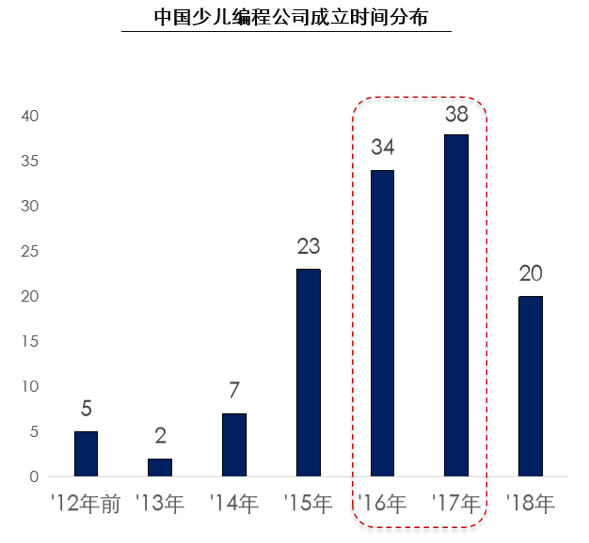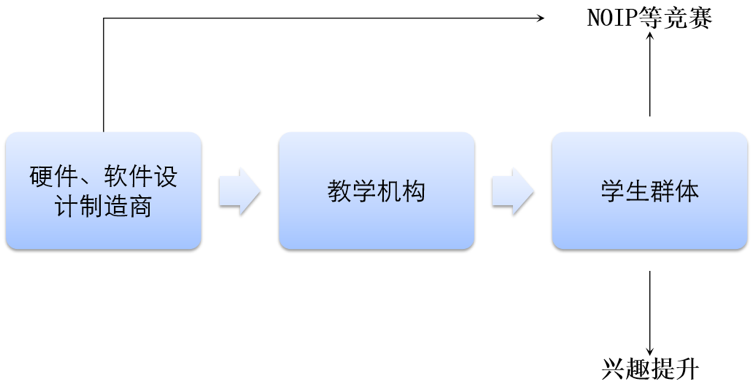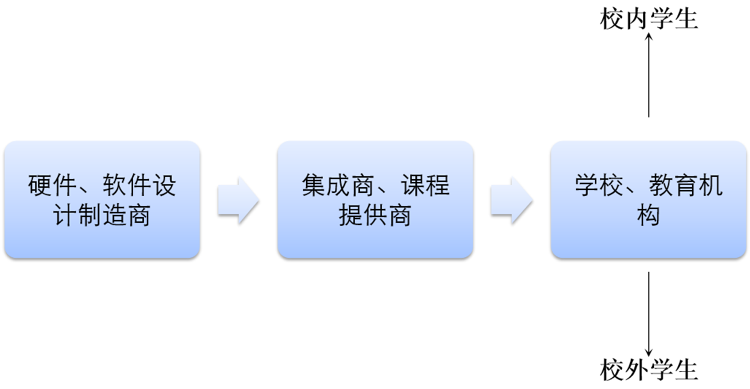With the catalysis of fading policy and capital, what kind of test will children’s programming face?
Editor’s note: This article is from WeChat public account “Future Star EdStars” (ID :edstars), author Leehom.
Guidance: In the past five years, Chinese children’s programming has experienced rapid development, the government’s incentives, the market’s gradual maturity, and the improvement of user demand, making programming even more hot. This article will focus on the Chinese market, explore the business model of children’s programming, future development space, and future development patterns.
In 2016, US President Barack Obama announced that he would provide over $4 billion in funding to some state governments to ensure that every K12 student has access to computer education. He called the program “Universal Computer Science.” action plan”. Although Trump vetoed the plan in 2017, he subsequently signed a presidential memorandum requesting the US Department of Education to invest at least $200 million a year in STEAM education.
Similarly, in the past 5-10 years, the United Kingdom, China, Israel, Spain and other countries have also proposed measures to support children’s programming in basic education. This is a global education wave.
The birth of children’s programming tools
In the United States, the beginning of children’s programming education is drag-and-drop programming represented by Scratch. Scratch was launched in 2007 and developed by MIT’s Lifelong Kindergarten Group and is available free of charge worldwide. Teen users. Scratch has a profound influence on the children’s programming market, so we need to focus on its development process.
Science –Scratch’s development line
-
In 2007, scratch 1.0 was born, using the Squeak language;
-
In 2013, scratch 2.0 was born, using the Flash language;
-
In 2019, scratch 3.0 was born, using H5 and Javascript.
According to personal statistics made by Whale’s quasi-information, 23 children’s programming related companies were established in 2015, more than three times that of the previous year, and the number continued to grow in 2016 and 2017.
(2012-2018 Children’s Programming Company establishment time)
In terms of financing, children’s programming in 2017 also showed a rapid growth trend, which will not be repeated here.
Policy and capital have jointly accelerated the development of China’s children’s programming industry. This acceleration can pull the gap between us and developed countries, and contribute to the popularization of children’s programming concepts. In fact, the upstream and downstream of the industry It also takes a long time to cultivate.
Industry chain composition of the Chinese programming market
C-end industry chain
Upstream: Hardware and Software Design, Maker
Middle-stream: Educational institutions that use these products to conduct teaching
Downstream: Learning to Program a Student Group
(Children’s programming diagram: B2C industry Chain diagram)
B-end industry chain
Upstream: Hardware and Software Design, Maker
Middle-stream: hardware, software integrators and specialized course product providers
Downstream: Schools and other educational institutions that buy products and services.
(Children’s programming B2B industry chain Schematic)
In the B-end market, the principals of the school have clear procurement requirements in STEAM and programming products, but the market expansion is subject to regional restrictions and the negotiation period is long, which is difficult.At the same time, Shengtong shares also acquired a “Zhongming Digital” that provides robot hardware. As of August this year, Shengtong has sold all the shares of programming cats.
Netease and the future will introduce CodeCombat (subscription mode) and CodeMonkey (subscription mode and video teaching) respectively through cooperation and acquisition. After localization, it will occupy a place in the market in the future.
Start-up companies, such as programming cats (tools + platform + real-life AI teacher), proud dreams (real-life teacher 1 to 1), counting garlic (real-life teacher small class), editing and learning (real-life teacher 1 to 6), Online programming education institutions such as Walnut Programming (online dual division), despite the differences in business models, they are competing for the same fast-growing market. Among the products with the largest number of users, the number of users has just broken by 10 million, which has much room for improvement compared with products such as Tynker.
If we say that the penetration rate of learning programming has increased rapidly in the past few years, it is catalyzed by policies and capital. The next test is more about the deepening of content and products. From the author’s personal observation, domestically There is still a certain gap between the fineness of content and well-known foreign products.
There is no doubt that children’s programming education has a long future in China.


